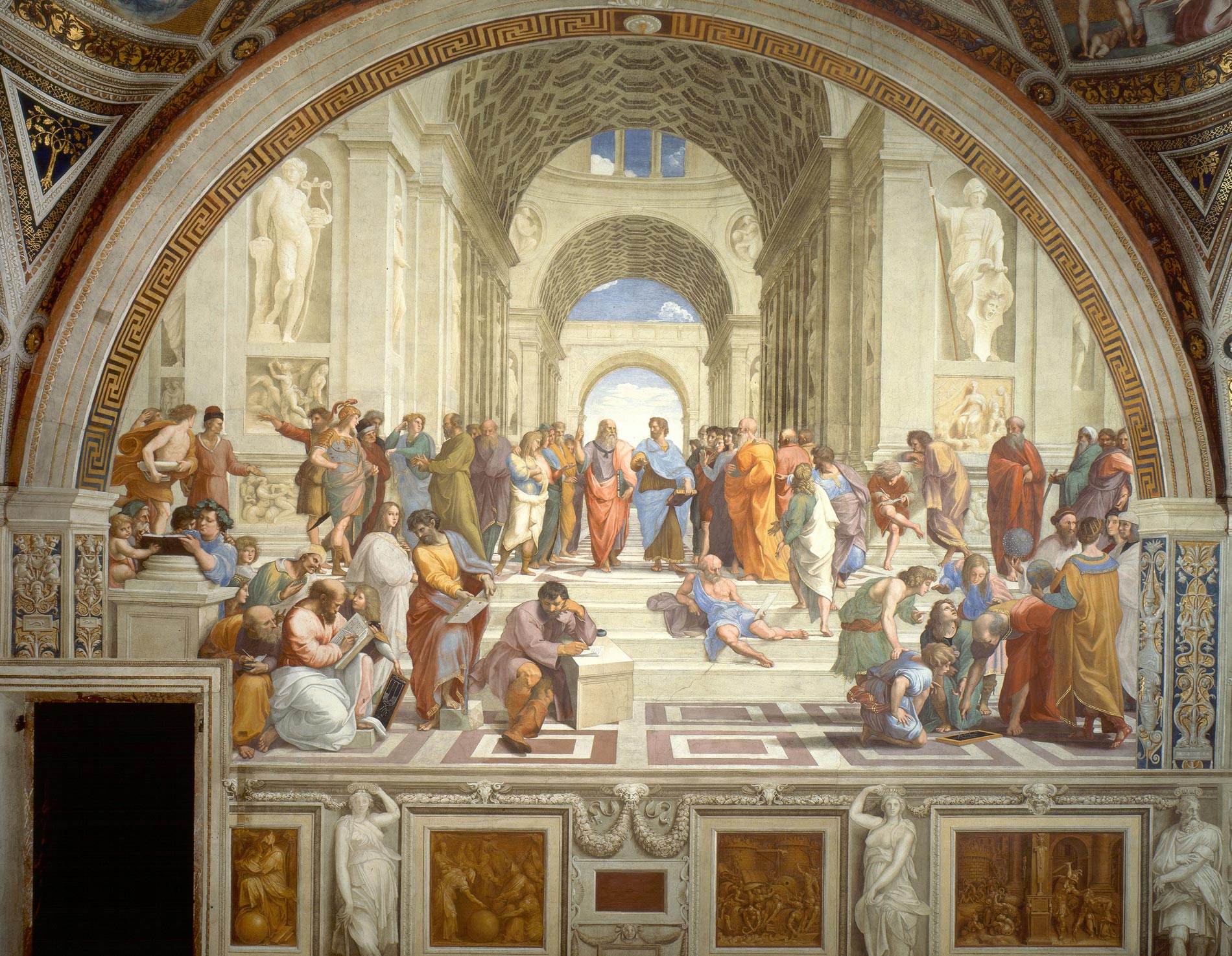Article by Clayton Cogmon Jr.
 Raffaello Sanzio da Urbino (also known as Raphael) was born during the year 1483 in Urbino, Italy.
Raffaello Sanzio da Urbino (also known as Raphael) was born during the year 1483 in Urbino, Italy.
He grew up with a strong talent for the arts, but no one could have predicted that one day pope Julius II would send Raphael an invitation to the Vatican.
The invitation was sent to hire Raphael for a commission; this commission would have Raphael paint “… the perfect embodiment of the classical spirit of the High Renaissance”: The School of Athens.
Painted between the years of 1509 to 1511, The School of Athens is one of the most famous fresco paintings ever done by Raphael.
It was one masterpiece of many done in the Apostolic Palace by Raphael.
There are many reasons why this painting catches the attention of everyone who lays their eyes upon it, but the reasons why art historians find it so appealing is its intense mystery and importance to the young artists career.
Raphael began painting The School of Athens at the age of 25. Pope Julius II was reluctant to hire Raphael due to the artists inexperience and unknown name in Vatican city. However, Raphael was recommended by the pope’s head architect, and the pope took a chance. Raphael was, at the time, well known in Florence, Italy; but he was no one in Vatican city. This would be his only chance to prove himself and have the pope become a regular client.
Raphael began work in the pope’s private library. He and many other artists were painting for the pope. Raphael was at a disadvantage due to his age, inexperience, and social status. The painting had to prove to everyone what kind of artist he was. This would not distract him, for he was forced to prove himself before.
As time passed Raphael’s confidence was shown. He had, in a span of a few short years, delivered a masterpiece. Pope Julius the II was astonished. He had never expected a painting of this magnitude for the young Raphael. The painting shows many philosophers in conversation with one another… but also artists. While painting The School of Athens, Raphael became very confident with his work and decided he would after all modestly paint himself over to the right the work. He also decided to paint a respected rival Leonardo da Vinci, who was at the time, painting the Mona Lisa.
Although, the thing that captivates art historians and enthusiasts alike is the mystery figure sitting on the steps. He is said to have been a last minute replacement due to the fact that he is not shown in Raphael’s final drawn out sketch. To make matters more intriguing, it is said that Raphael added the figure after sneaking an unknown peek at his bitter rivals (Michelangelo) painting, the Sistine Chapel ceiling. Could it be possible that after Raphael saw the ceiling he abandoned his rivalry and gave Michelangelo a last minute invitation to The School of Athens?
After the painting was completed Raphael painted the rest of the pope’s private library. The pope, thoroughly impressed basically ordered Raphael to tear down the other artists work and give him more paintings. Raphael had, by the age of 29, achieved the high ranking status he had yearned for. Unfortunately, it would not last for as long as he’d hoped because at the young age of 37 he died April 6th, 1520.
Raphael had achieved the same level of status as his rivals in far less time. He was a quick learner and a passionate painter. He will forever be known as the Old Master.






